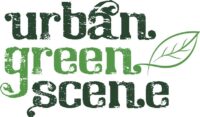When furnishing your home with light fittings and electronic equipment, it is important to stop and think about Energy Rating.
Thailand has 12 million households, which account for 22% of the country’s energy consumption. If more households use high efficiency appliances, the energy demand of the country will be much decreased. In addition, household energy bills will decrease thus saving consumers money. However, the most important factor is that it reduces national energy consumption which is necessary for our world today.
To help you identify which appliances, electronics are energy saving, look out for a few key labels that will help you make your environmentally responsible decision!
Labels to look out for:
EGAT’s (Electricity Generating Authority of Thailand) energy label is recognized among consumers as an assessment of energy efficiency of an electrical appliance. You will find this label on refrigerators, air-conditioners, compact fluorescent lamps, ballasts, fans, nutritious brown rice, rice cookers, and electric lamps.
Shown on the right, EGAT’s energy label, called “Energy Label No. 5″ as it rank products on a scale of #1 to #5, where a rating of #5 is the highest efficiency level and #3 is average. The label also shows consumers the average energy consumption per year (kWh/year) and the average electricity price per year (Baht/year). Since these programs are voluntary, manufacturers/distributors choose not to label their products if tests reveal that their products are less efficient than average (#3). Thus, no product in the market shows #1 or #2 label.
To obtain an energy label, one sample unit must be randomly selected from a pool of at least 30 units of the same model (same size and features) and sent to the Thailand Industrial Standards Institute (TISI) laboratory for energy performance testing. Once the model has been tested, it is issued a label with a ranking between #1 to #5 according to its efficiency value compared to the average efficiency value within its size category. Then, the manufacturer/distributor may choose whether or not to use the assigned label on their product.
This label is thus incredibly useful in helping you assess whether or not an appliance is right for you and the environment.
An alternate label is the Green Label Thailand shown on the left. This shows that the product has been assessed to be environmentally friendly by the Thailand Environment Institute. For more details on this label, certification and assessment criteria check out the article on the Green News page.
Click here for a TEI Website List of certified eco-friendly electronics and lighting. Its a little hard to read, but nevertheless a useful resource.
Head to your local electronics store and look out for the labels! Send us an email at urbangreenbkk@gmail.com if you find a product you think stands out from the green wash.
Labels that cannot be trusted:
Labels such as Energy Star logo as shown on the right are questionable and provide no assurance of environmental friendliness. There have been many cases of false labelling using this logo and as such is not a trusted emblem. For more details see Energy Star.
Sources
Electricity Generating Authority of Thailand
Do you really need that carrot dicer?
Also, it is important to remember that we have a lot of electronics we don’t use at all! So think before you buy something….do you actually need it? Do you actually need a gadget specifically for dicing carrots when you already own a food processor? Buying multi purpose gadgets can help save space, money and electronic waste.
